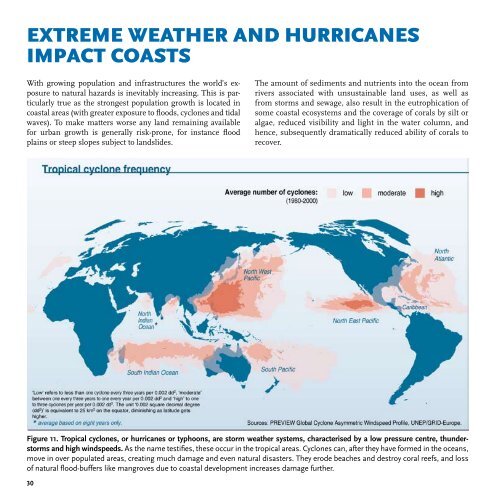In Dead Water: Merging of climate change with - UNEP
In Dead Water: Merging of climate change with - UNEP
In Dead Water: Merging of climate change with - UNEP
You also want an ePaper? Increase the reach of your titles
YUMPU automatically turns print PDFs into web optimized ePapers that Google loves.
EXTREME WEATHER AND HURRICANES<br />
IMPACT COASTS<br />
With growing population and infrastructures the world’s exposure<br />
to natural hazards is inevitably increasing. This is particularly<br />
true as the strongest population growth is located in<br />
coastal areas (<strong>with</strong> greater exposure to floods, cyclones and tidal<br />
waves). To make matters worse any land remaining available<br />
for urban growth is generally risk-prone, for instance flood<br />
plains or steep slopes subject to landslides.<br />
30<br />
The amount <strong>of</strong> sediments and nutrients into the ocean from<br />
rivers associated <strong>with</strong> unsustainable land uses, as well as<br />
from storms and sewage, also result in the eutrophication <strong>of</strong><br />
some coastal ecosystems and the coverage <strong>of</strong> corals by silt or<br />
algae, reduced visibility and light in the water column, and<br />
hence, subsequently dramatically reduced ability <strong>of</strong> corals to<br />
recover.<br />
Figure 11. Tropical cyclones, or hurricanes or typhoons, are storm weather systems, characterised by a low pressure centre, thunderstorms<br />
and high windspeeds. As the name testifies, these occur in the tropical areas. Cyclones can, after they have formed in the oceans,<br />
move in over populated areas, creating much damage and even natural disasters. They erode beaches and destroy coral reefs, and loss<br />
<strong>of</strong> natural flood-buffers like mangroves due to coastal development increases damage further.

















